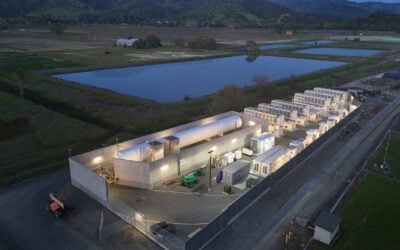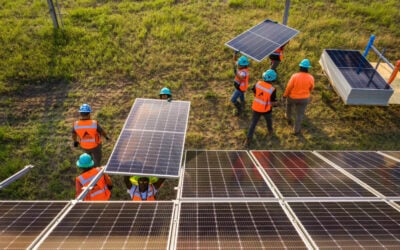Electrovaya completed the acquisition of its manufacturing subsidiary, Litarion, in 2015. Image: Electrovaya.
The prospect of the ‘commoditisation’ of lithium-ion batteries is not likely to be as clear-cut as has been seen in the PV industry, one manufacturer has said.
Electrovaya’s business development director Kunal Phalpher spoke with Energy-Storage.News at the Electrical Energy Storage show in Munich, co-located with Intersolar Europe. Phalpher, who has a background as an engineer and in technical sales, said that while there has correctly been an awareness from hardware providers that advanced batteries are likely to be differentiated more on price in the future as the technology continues to scale and become ever-more ubiquitous, the parallels seen with the PV industry do not extend as far as many have assumed.
“I would say if we compare it to solar where everybody said modules are a commodity, I’d say the chemistry in batteries is more finicky,” Phalpher said.
“There’s more recipes, there’s more ability to differentiate on technology. Iron phosphate was interesting, then NMC, then something else might come along. A solar module, there’s more quality differences – the glass, the frame, the paste and other materials but the core that makes the energy is the cell. That’s really become commoditised.
Enjoy 12 months of exclusive analysis
- Regular insight and analysis of the industry’s biggest developments
- In-depth interviews with the industry’s leading figures
- Annual digital subscription to the PV Tech Power journal
- Discounts on Solar Media’s portfolio of events, in-person and virtual
“The Li-ion cell is more complicated than that silicon solar cell. You can change the electrodes, you can change the chemistry in the electrodes, the electrolyte, the separator. It’s really not a standardised size either – small cell, power cell, energy cell. There’ll always be room to play – what we see from the big players is that nobody wants to stick to one supplier.”
Electrovaya, headquartered in Canada but with manufacturing facilities in Germany following the acquisition of Litarion and its production lines, has an annual production capacity of around 500MWh. The company announced a master supply deal to an unnamed US Fortune 100 OEM in May in an arrangement that the company says is expected to generate US$80 million in revenues over the next three years. The applications of Electrovaya’s battery have not been specified.
The company also signed an MoU (memorandum of understanding) with another unnamed OEM, this time a European company involved in fleet transportation, including buses.
Scale and specialisation
Electrovaya touts its all-ceramic separators as one of its competitive advantages, as well as the ability to put its batteries through 9,000 cycles. Phalpher said that opportunities across a number of diverse industries, including stationary energy storage, e-mobility and specialised heavy industrial applications such as forklift trucks, would contribute to scaling up Li-ion by bringing down costs and therefore prices. However, he added that each market at the same time has different needs and can be targeted through choosing the right areas to specialise in.
“I don’t see it as being as commoditised as solar cells. We looked at technology especially after the acquisition (of Litarion) and tried to focus on higher rate heavy duty batteries. The forklift market – 9,000 cycles makes a difference….[but] in the automotive industry no one wants 9,000 cycles.
“Whereas grid storage is paired with solar, solar is sold on a 20-25 year life cycle. If you take a three year home storage system, nobody wants that. The home storage market, just from talking to customers, they see high cycle life as a good marketing tool to the end customer. It’s similar to range anxiety on cars.”






